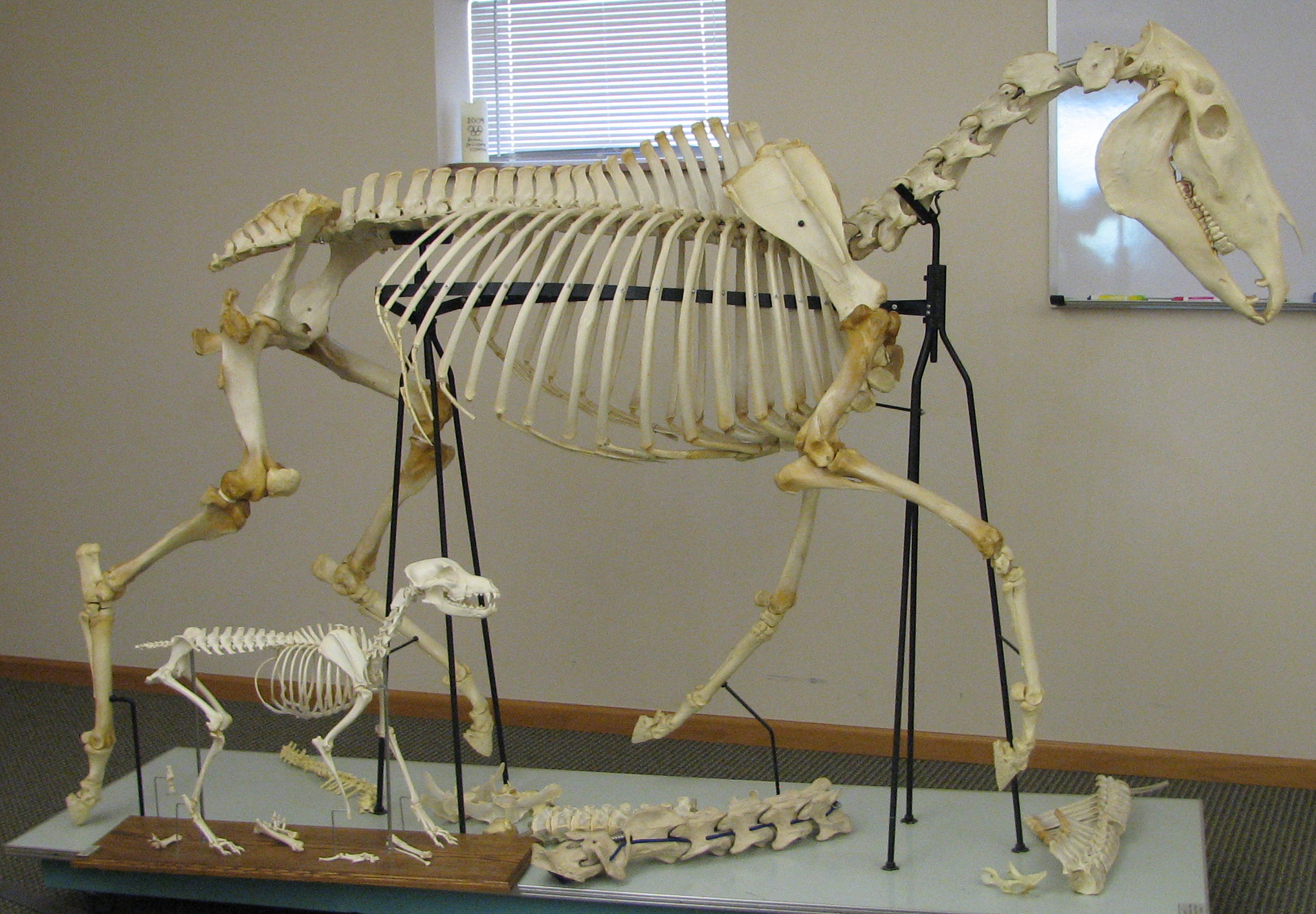Chiropractic is a drug-free, natural approach to health care and is concerned with treating disorders of the neuromusculoskeletal system that impede overall health and function. Chiropractic works well alongside traditional veterinary care and is complementary to traditional veterinary care rather than an alternative.
WHAT DO CHIROPRACTORS TREAT?
Chiropractors treat restriction of movement within a joint that affects the function of that joint as well as the surrounding tissues (ligaments, muscles and tendons, connective tissues, blood supply and nerves). Joints depend on motion in order to remain healthy, and once motion is compromised, changes begin to take place in the joint in as quickly as 5 seconds.
A LITTLE BIT OF ANATOMY, PHYSIOLOGY AND NEUROLOGY
Every spinal joint has nerves as well as small muscles that are densely packed with special cells (mechanoreceptors) that relay information about its movement and position to the central nervous system (spinal cord and brain). This makes up approximatey 90% of the body’s sensory input to the brain. When a joint stops moving, a cascade of events is initiated. Some of these changes include a build up of inflammation in the surrounding tissues, and the muscles are no longer able to change length (they can’t move if the joint doesn’t move). As a result, the brain loses the information it needs to maintain appropriate muscle contractions and smooth coordination of body movement. This would be the same as trying to figure out the meaning of this paragraph with every 3rd and 5th letter missing. When the brain does not have the appropriate input it can not produce the appropriate output, which results in the development of abnormal movement patterns. A young, fit animal is often able to hide these by developing compensatory areas of joint fixation and/or hypermobility. However, if these abnormal compensatory patterns are not corrected, over time it often leads to pain and/or injury and in the long term degeneration can develop due to abnormal biomechanical stress.
A LITTLE BIT OF BIOMECHANICS
The spine works as a chain. Each joint in the spine moves only a few degrees in each direction but when all of these are added together, great flexibility is allowed. Animals are designed to be propelled forward by absorbing and releasing potential and kinetic energy in the spine as it moves. If there are movement restrictions in the spinal column, this energy is lost and the animal is forced to pull themselves forward in an inefficient way that places more stress on the body and requires much more energy. This leads to both mechanical and training issues as well as a loss of performance. Our bodies will compensate to perform a desired task (a simple example being limping to take the pressure off a sore foot). At the spinal level, the joints adjacent to the restriction compensate for the lack of movement by moving more and become hypermobile (too much movement) and increasingly prone to injury and degeneration. In addition, the restricted joint also begins to degenerate.
IN SUMMARY
If a joint is “fixed” or its movement is restricted within its normal anatomical range of motion , this can lead to stress on the surrounding tissues and inflammation. All of these factors alter sensory input to the brain. The aim of chiropractic treatment is to therefore restore normal function of the spine and other joints so that there is normal input to the central nervous system, which results in optimal output and leads to symmetrical, naturally flowing movement patterns.
ABOUT THE TREATMENT
The chiropractic adjustment consists of a short, quick thrust to one specific joint at a time. This restores normal range of motion, alleviates pain, and releases local muscle spasms. Due to compensatory movement patterns, the entire spine will always be examined as well as any concerning limbs. Any areas of restriction of motion will be treated.

Skilled spinal manipulation is not normally painful. Sometimes, certain aspects can be momentarily uncomfortable, however, chiropractic treatment is often sought out because of its overall effectiveness in reducing pain. Most animals thoroughly enjoy the treatment: it is quite common for them to become increasingly relaxed as the treatment progresses, even to the point of becoming sleepy!
It is a common misconception that chiropractic adjustments involve bones being ‘out of place’ and the chiropractor ‘puts them back’. This is not the case. A bone actually being out of place would involve a complete or partial dislocation with severe ligament damage and a very unstable joint with detrimental affects on the nervous system. Chiropractic is safe because it only works within the normal anatomic limits of a joint, hence ligaments are never being overstretched.
No mallets should ever be used to adjust any animal, including horses. All adjustments are done by hand. If you see someone using a technique that causes you concern, please check their credentials for proper education from an accredited animal chiropractic college.
HOW MANY TREATMENTS?
Most animals show visible improvement after 1-3 treatments. Acute problems often respond quickly, while longstanding problems may require further sessions. Animals with chronic conditions respond very well to regular supportive treatment every 2-6 months. Working and performance animals can benefit from regular check-ups so that underlying problems can be identified and treated before they begin to impact performance
AFTER CARE
Most animals feel better straight away, however some may be slightly stiff or sore for the next 24-72 hours. They may also be sleepy or off their food for a short time. The animal can usually return to their normal routine but rambunctious play, stall or kennel confinement, and intense training sessions should be avoided for a couple of days, especially after the first treatment. In some cases it is necessary to embark on an exercise and rehabilitation program to try to ensure that the animal has the necessary level of fitness to cope with the demands made upon it and to reduce the risk of further injury. Specific guidelines will be given to you after your animal has been thoroughly assessed.
